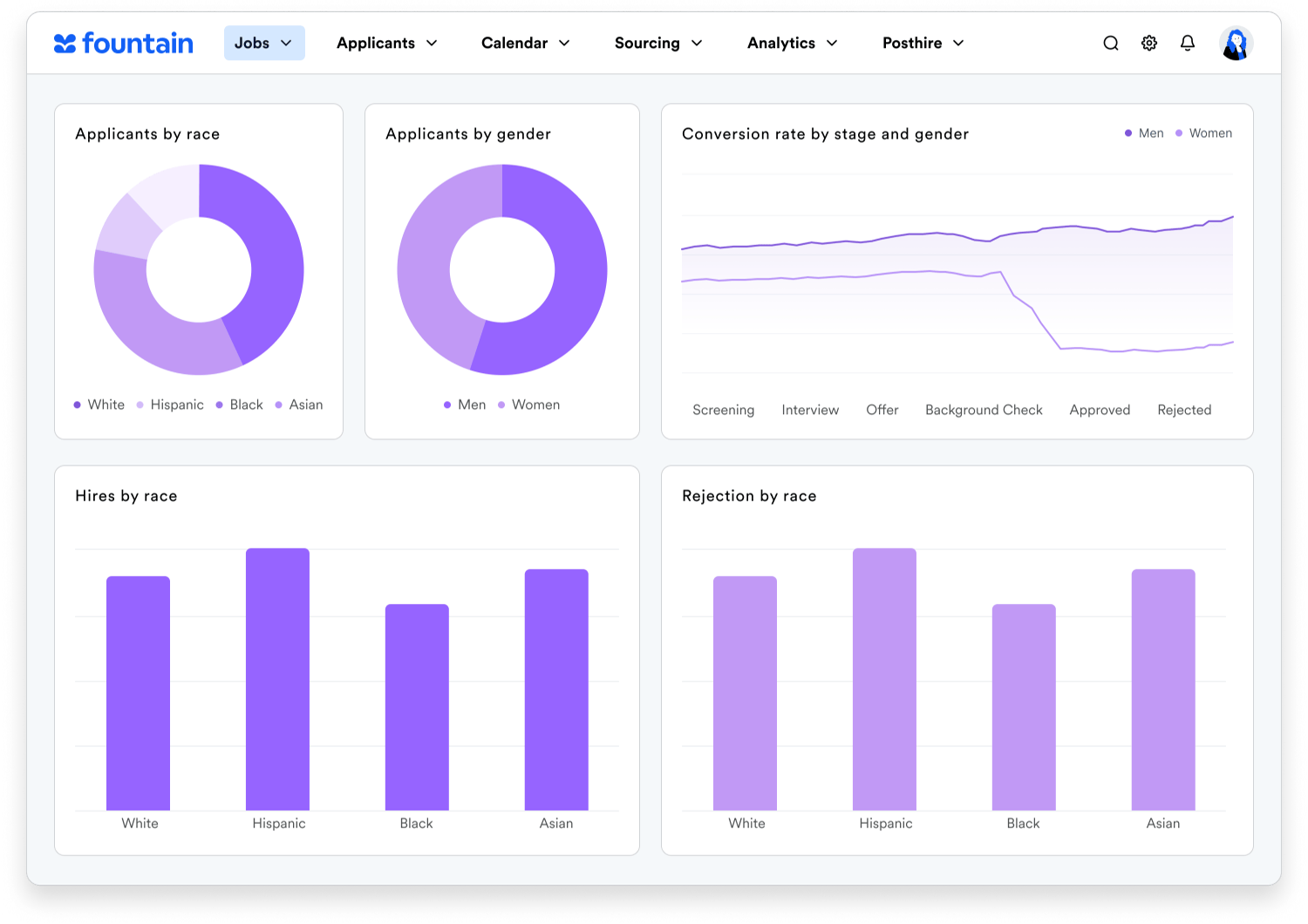Attention all compliance nerds! Your end-all-be-all HR compliance checklist has arrived.
In both the pre- and post-hire process, it’s the duty of the recruiting team to make sure all hires (and hiring processes) are legally compliant. This means that your employment practices as well as your hires abide by and are protected by all relevant employment regulations.
In this post, we’ll cover everything you should include when conducting an HR compliance audit to ensure your workers are not only legally able to work for you but also are treated with fairness and respect.
Not sure what to include in an HR compliance audit? Click here.

What is HR compliance?
Before we dive into the checklist, let’s explore the basics of HR compliance.
HR compliance is the act of using policies and procedures to ensure how you hire adheres to federal, state, and local employment laws and regulations. These rules may change frequently, so it’s up to the HR department to stay on top of local, regional, and national regulation updates. If they don’t, there are strict penalties for violating HR compliance, which we’ll get to later in this post.
Core components of HR compliance
The components of any reliable HR compliance program include (but are not limited to) the following:
- Labor laws and regulations. As mentioned, labor laws and regulations can change at any time, so HR teams need to stay abreast of the latest in their applicable jurisdictions.
- Employee classification, privacy, and data protection. As outlined in the Fair Labor Standards Act, employees need to be classified as exempt (usually paid a salary, not eligible for overtime pay) or non-exempt (usually paid hourly, eligible for overtime pay), and as employees or independent contractors. Employers also need to have systems in place to protect their employees’ private information.

- Workplace safety and health. Employees need to be assured they’ll be working in a safe environment, one that is free of hazards. In the U.S., these are issued by the Occupational Safety and Health Administration (OSHA).
- Work authorization documentation. Workers need to provide all necessary documentation to confirm their identity, their legal permission to work in a certain location, and their tax information.
Why should you use an HR compliance checklist?
An HR compliance checklist can come in handy for multiple reasons. If your HR process is not legally compliant, you may be subject to legal repercussions, such as fines, sanctions, and even lawsuits or bankruptcy.
See below for a full list of the benefits of having (and actively enforcing) an HR compliance checklist.
- Risk mitigation. With HR-compliant processes, you’ll be less susceptible to legal risks like lawsuits.
- Adherence to laws and regulations. HR compliance practices will keep your business honest and out of hot water by ensuring you’re doing all the right things when it comes to hiring appropriately.
- Ensures fair hiring practices. When you hire fairly and can assure your employees that your selection process is free of bias, this positively affects your employer brand.
- Streamlined onboarding process. HR-compliant hiring processes can make your overall recruiting funnel more efficient.
- Retention assurance. Compliant employees are less likely to attract negative legal attention and are therefore more likely to stay on staff for the long term.
What to include in your HR compliance checklist
Need some guidance in building your HR compliance checklist? We’ve got a few tips to help you ensure you get everything on the list—and that you’re able to check it off!
Before you get started, remember that your checklist should be tailored to the needs and requirements of your specific industry, internal procedures, and operating location(s).

Hiring and recruitment
Ensure your job postings are clear and accurately convey the job duties expected of your workers.
When it comes time to hire a new employee, you’ll need a thoroughly vetted contract or employee agreement, as well as a comprehensive handbook so that your new hire knows what to expect in terms of employee conduct. Include background checks and reference checks as part of your hiring process, as well, so you can be sure you’re hiring the right people.
Labor laws
Your hiring process needs to follow labor laws, from Equal Employment Opportunity (EEO) statutes to wage and workplace regulations.
Health and safety
Workers must be entitled to the Family and Medical Leave Act (FMLA) in the case that they are unable to work due to health reasons.
Make sure you establish a workers’ compensation program in case your employees become unable to work due to workplace factors (e.g., injury).
You also need to abide by regulations issued by OSHA to ensure a safe working environment for all workers.

Payroll
The Fair Labor Standards Act (FLSA) ensures workers are paid fairly, are paid at least minimum wage based on location, and are identified appropriately (exempt vs. non-exempt) so that overtime pay can be considered.
Privacy and data protection
Employers must make sure they adhere to regulations surrounding data privacy and security. For example, European Union employers must follow the General Data Protection Regulation (GDPR) when it comes to employee information.
Worker well-being
Well-being initiatives can include anti-discrimination and anti-harassment policies, health insurance (if applicable), vacation and sick day policies, and parental leave.
The Fountain approach to compliance workflow efficiency
Looking for a complete HR compliance solution? We’ve got you covered!
Fountain Compliance uses AI and IDP technology to accelerate and simplify compliance tasks. By providing transparent oversight of compliance status, your hiring teams can achieve 100% compliance, keeping your workforce fully productive at all times.

